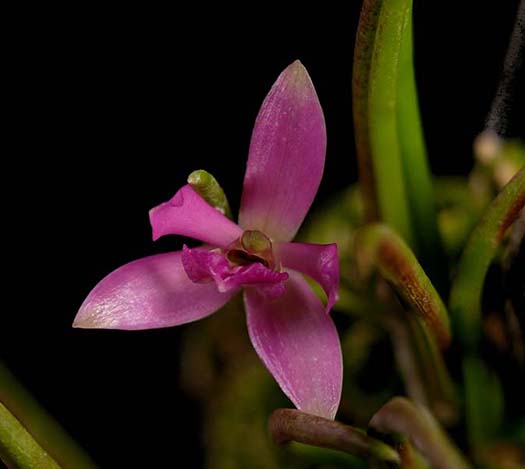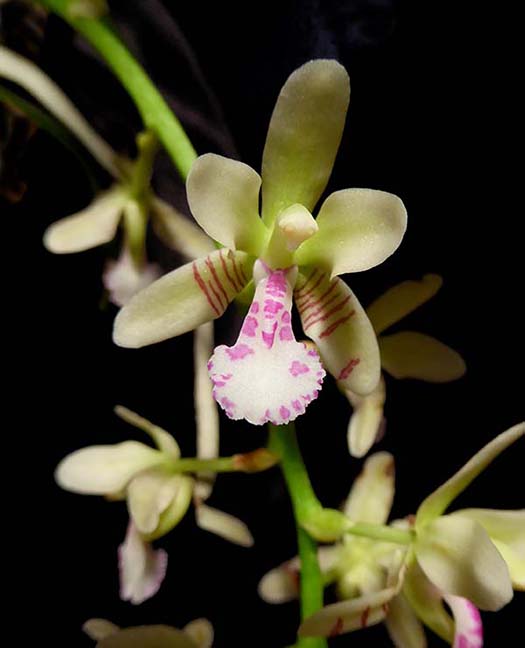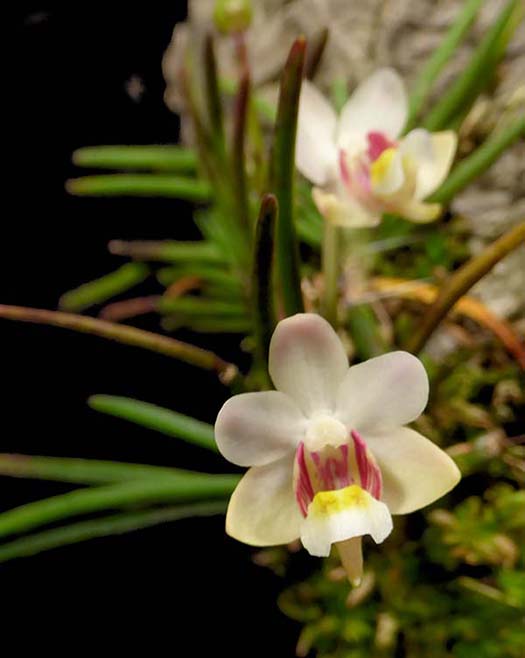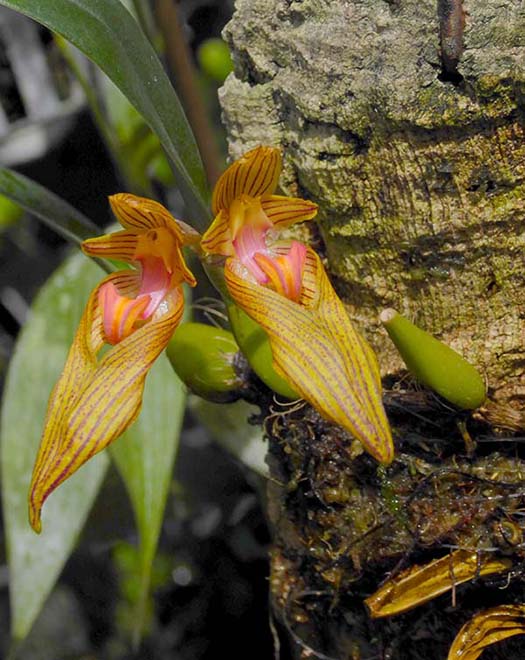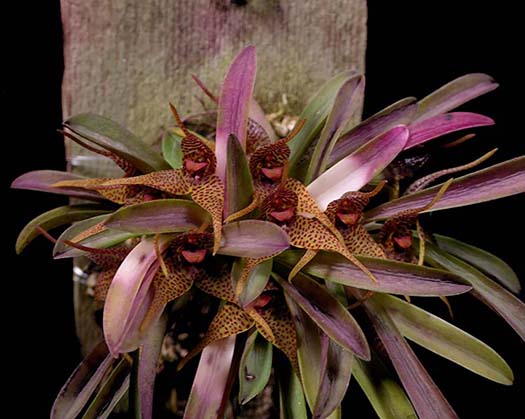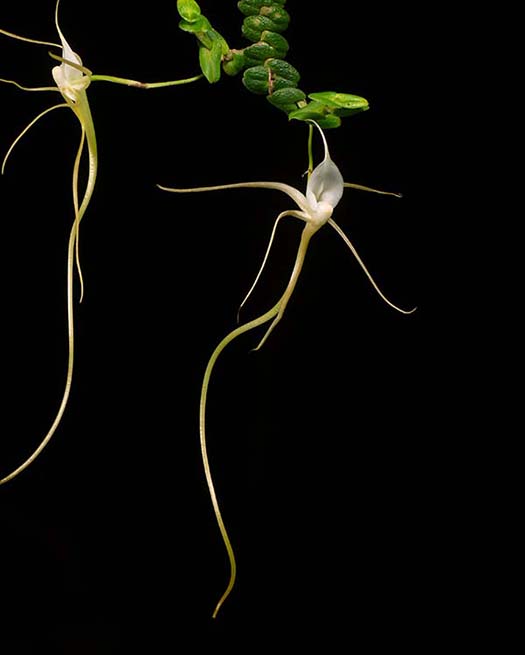April, 2019
From Una Yeh:
|
||
Dendrobium linguiforme |
||
From Cindy Jepsen:
|
|
Bulbophyllum newportiiThis is a new species for me, I’ve had it about 6 months so this is my first bloom cycle. I keep it low in my Tempe, Arizona glass greenhouse where it receives medium lighting, 60% humidity and so far the temperature has been between 40-75°. I water with an RO system several times a week and feed weekly with MSU, seaweed and Superthrive on a rotating basis. There is a second spike with 5 buds ready to open. |
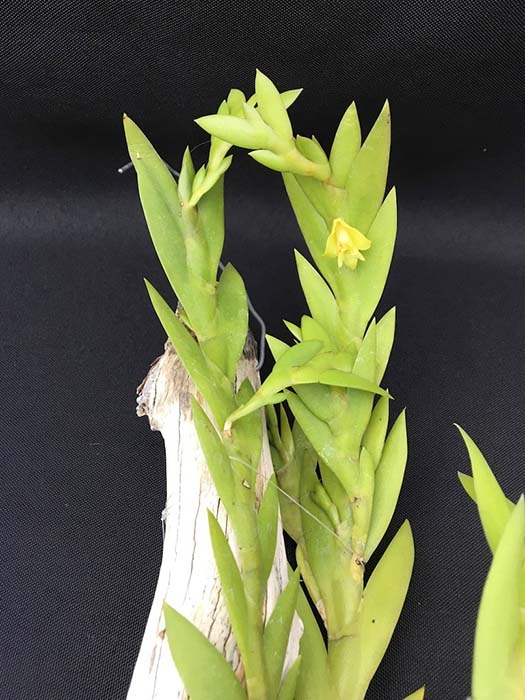 Dendrobium anceps |
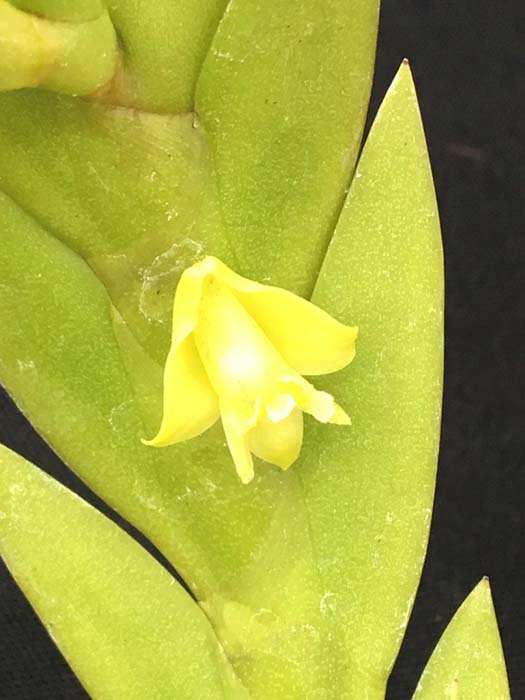 |
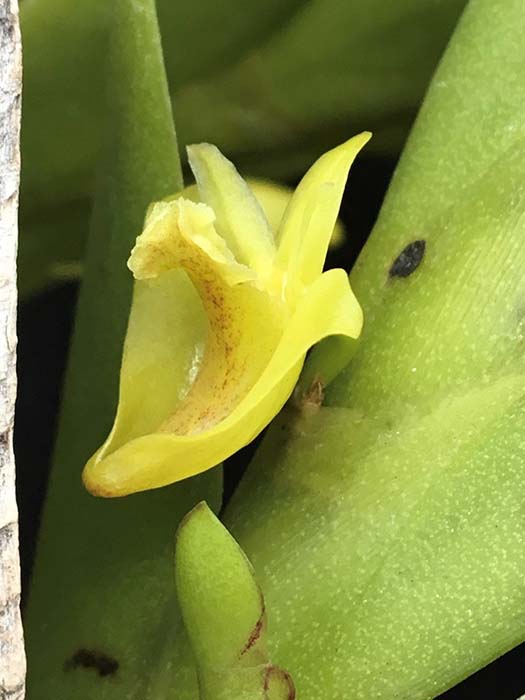 |
I’ve had this species for several years and it did nothing. About 6 months ago it began to grow and really fill out. This is my first bloom and I have several more buds coming. I have recently improved my feeding routine and increased the humidity in my greenhouse and I think this plant is rewarding me for it. I keep it low in my greenhouse where it receives medium lighting, 60% humidity and so far the temperature has been between 40-75°. I water with an RO system several times a week and feed weekly with MSU, seaweed and Superthrive on a rotating basis. |
|
From Scott McGregor:
|
|
In Bloom: Red, White, and Blue |
|
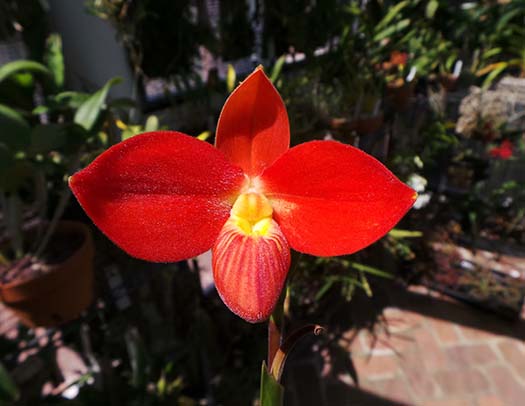 |
|
Phragmipedium besseae ('Pucker' x 'Colossal')As an outdoor grower, what do you do when an orchid supposedly needs a greenhouse, but you really want to grow one? I couldn’t resist the intense, saturated color of Phragmipedium besseae. I bought a sampler pack of three line-bred varieties, gave one away and kept the other two. I lost one the first winter, but the other Orchid Zone ('Pucker' x 'Colossal') strain has now been with me for 5 years, living through a temperature range of 29-115F. It isn’t lush and vigorous, but every year I get a month or two of successive blooms. I grow it bright (dappled sun) and wet (R/O water). Two pictures—from 2014 and now, 5 years apart, same plant. |
|
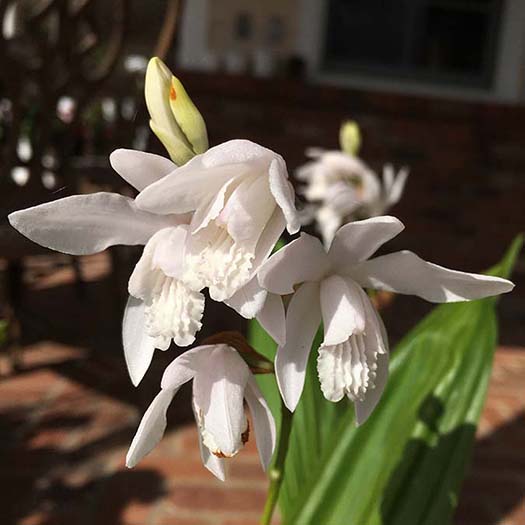 |
Bletilla striata 'White Pearl'Among the most care-free outdoor growing orchids are Bletilla striata and B. ochracea. B. striata is the first to bloom, with long-lasting flowers from February through April. Pictured is B. striata “White Pearl”, about as “alba” as any orchid you’ll see. This was a gift from Richard Hess and has multiplied substantially over a couple years. Plant them directly in the ground in your garden, or grow as a terrestrial in a large pot. |
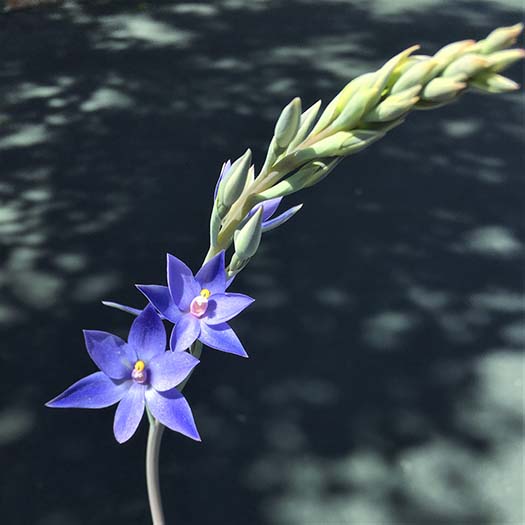 |
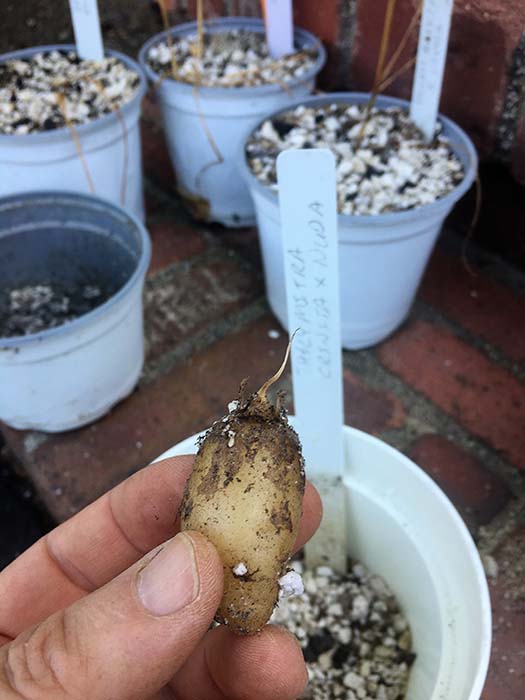 |
Thelymitra crinita x glaucophylla (nuda)Rounding out the color palette, Spring is the season for Thelymitras, or Australian “sun orchids”, named because the flowers only open on bright sunny days and close up again each evening. These are tuberous terrestrials and must be kept completely dormant/dry over the summer, but resume growth with our winter rains. Pictured is T. crinita x glaucophylla (nuda), just beginning to open a long spike, and the same plant as a tuber last July. |
|
Others in bloom: |
|
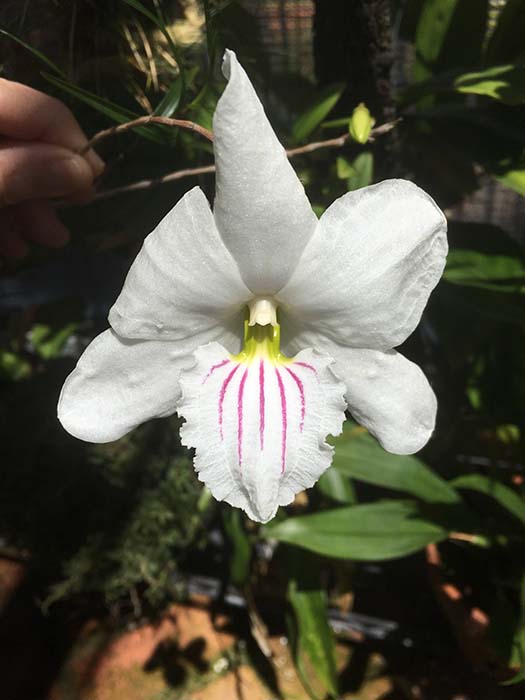 |
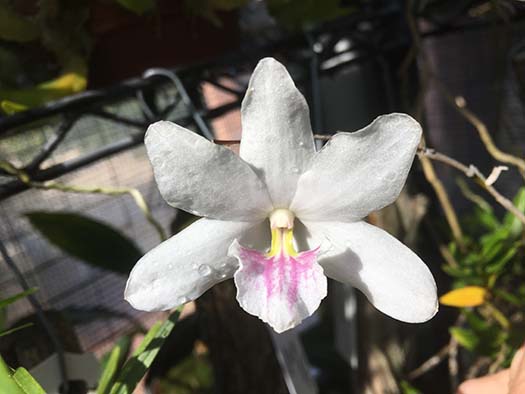
Dendrobium papilioThis evergreen Dendrobium species from the Philippines is a very worthwhile species to grow outdoors-- it has wiry thin canes and buds that are easy to overlook. They open into solitary large white flowers with a candy-striped pink lip and drift in the breeze at the end of the canes. There are two varieties of this species on the market-- one deemed "large form" for large, single flowers, and the other "floriferous form" that bears smaller flowers more profusely. My favorite is this one, the "large form"(left) for the strikingly beautiful and impressive flowers. Here's a picture of a "floriferous" flower (above)that bloomed last September for comparison. |
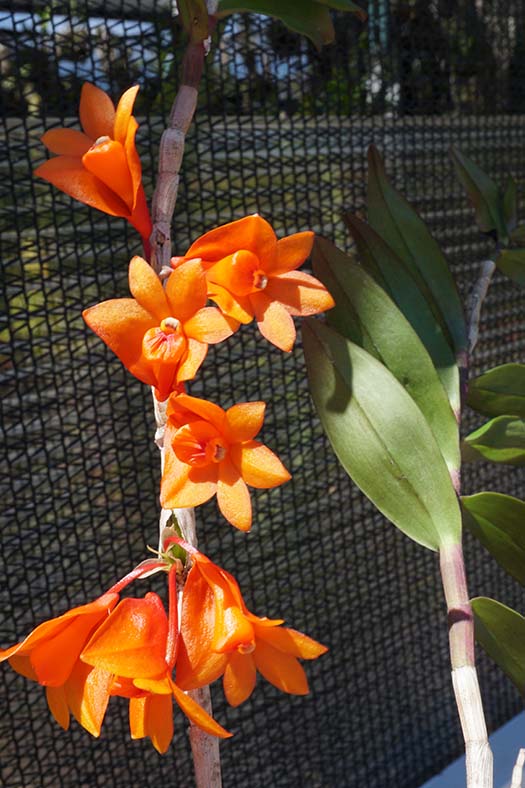 |
Dendrobium mohilanumDendrobium mohlianum comes from high in the mountains of Fiji and Samoa and has the flower shape common to many Dendrobiums from the South Pacific Islands. It grows easily outside, doesn’t mind winter rains and has brightly colored, long-lasting waxy flowers. Why struggle with D. cuthbertsonii-- grow this one instead! Pictures are from this month (left) and a couple years ago (above). |
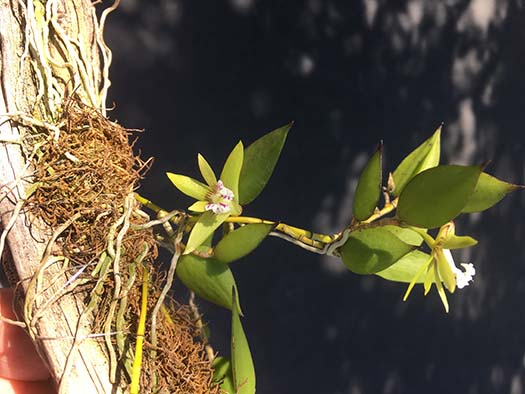
Dockrilla pugioniformisNot showy, but easy to grow and as the pendant canes get longer, the plant is much prettier than most of this family when not in bloom! |
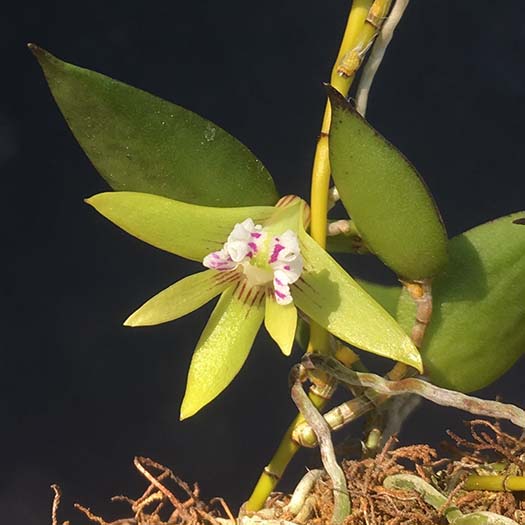 |
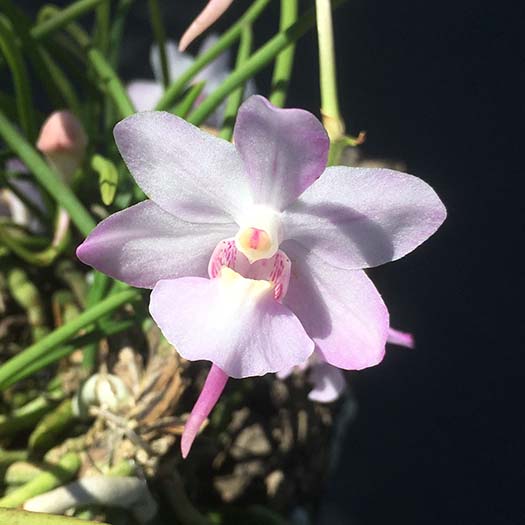
Holcoglossum tsiiHolcoglossum is a great genus of plants with terete vanda-like leaves and showy flowers from the mountainous regions of Southeast Asia. Holcoglossum tsii was discovered in China only about 15 years ago, but is one of my favorites for easy flowering, and long-lasting fragrant flowers. A large plant can have over a dozen 4cm flowers. |
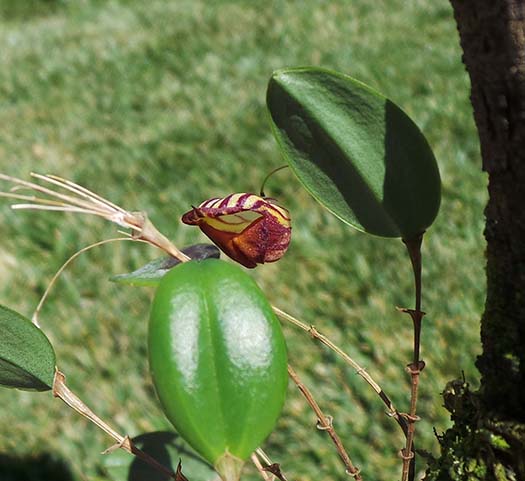
Lepanthes caprimulgusLepanthes is a genus of hard-to-grow cloud forest orchids with inconspicuous flowers. Here’s one species worth the trouble-- Lepanthes caprimulgus. It has curious red-striped balloon-like flowers and blooms several times per year with long lasting flowers on wiry stems. The flowers are huge compared to others in the genus, but still small at about 1.5cm, and so hard to photograph well. Here’s a picture from this month, but some much better ones I took from the same plant earlier. It requires cool summer nights and can never dry out, but worth some pampering—mine has made it through six Southern CA summers so far. |
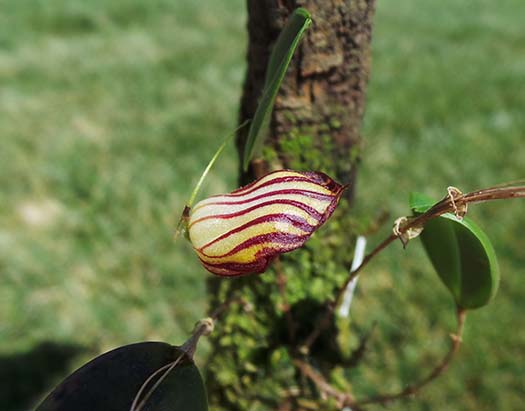 |
|
Some more terrestrials |
|
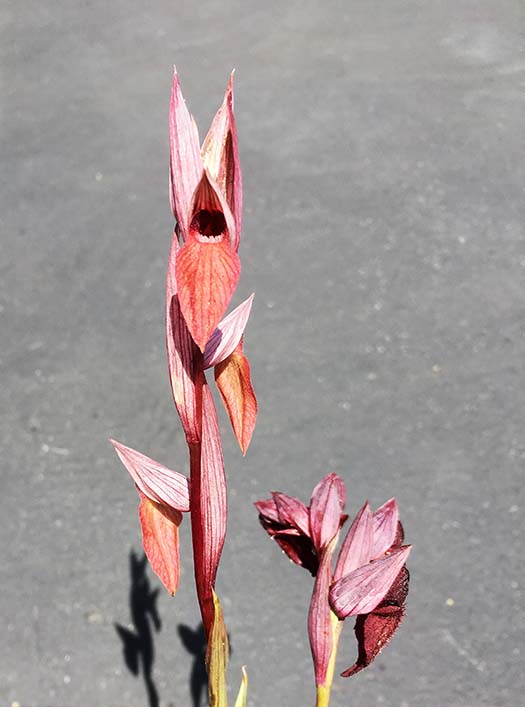 |
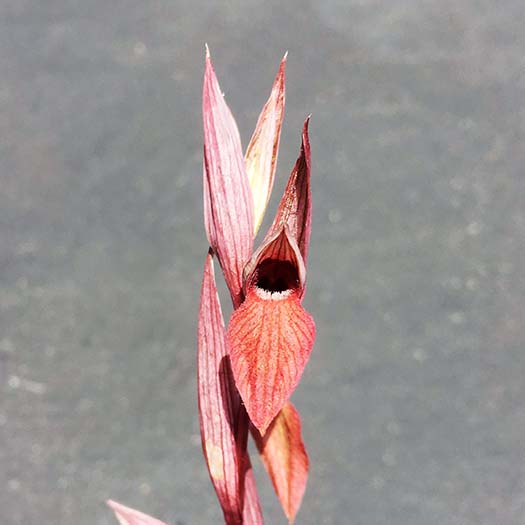 Serapias vomeraceaI planted three tubers of Serapias cordigera in a single pot, two from my German source and one from my source in Greece. Two of them flowered as normal S. cordigera, but one was taking a long time to open and the spike grew much taller. It finally opened and it is definitely a different species, which I’m tentatively identifying as S. vomeracea. The photo on the right is a closeup of the new one, and the one on the left shows S. cordigera still in bloom, on the lower right. |
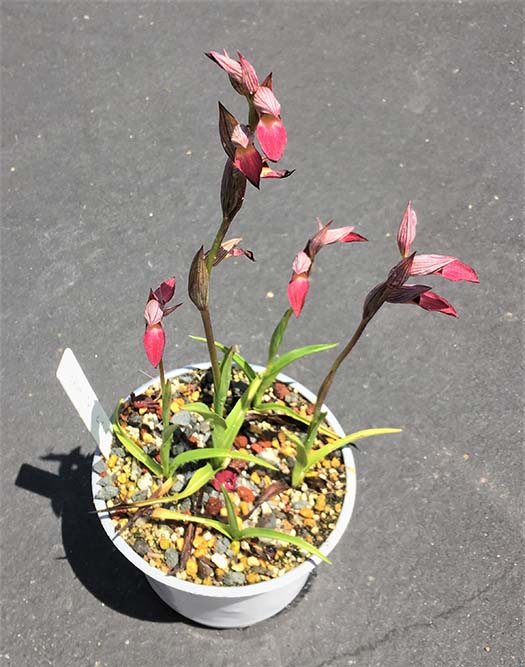 Serapias lingua |
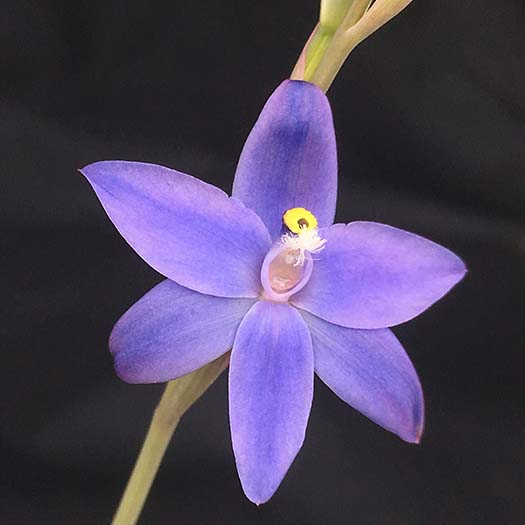 |
Thelymitra alcockiae x crinitaMy first Thelymitra flower of this year opened during a morning’s brief sunny spell (the buds only open and stay open in full sun). It is a primary cross of Thelymitra alcockiae x crinita blooming for the first time. Looks like it picked up the better flower form of crinita, but alas some of the violet overtones of alcockiae. I gave it some acid fertilizer and they tend to get more blue after being open for a few days. |
|
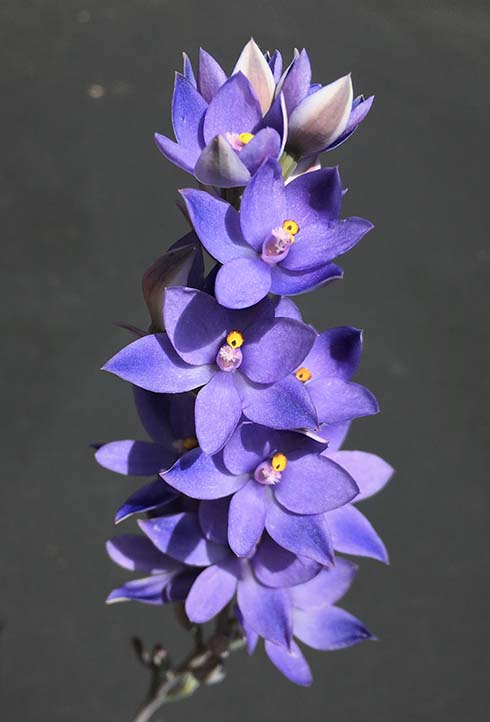
Thelymitra crinita x glaucophylla (nuda)Same plant as earlier in the month but a nice bouquet blooming near the end of the spike |
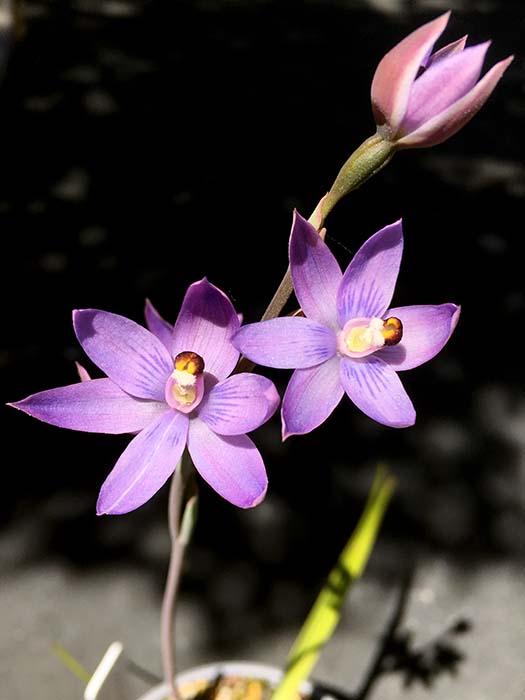
Thelymitra dentata x glaucophyllaA bit of a shy bloomer, but has stripes! |
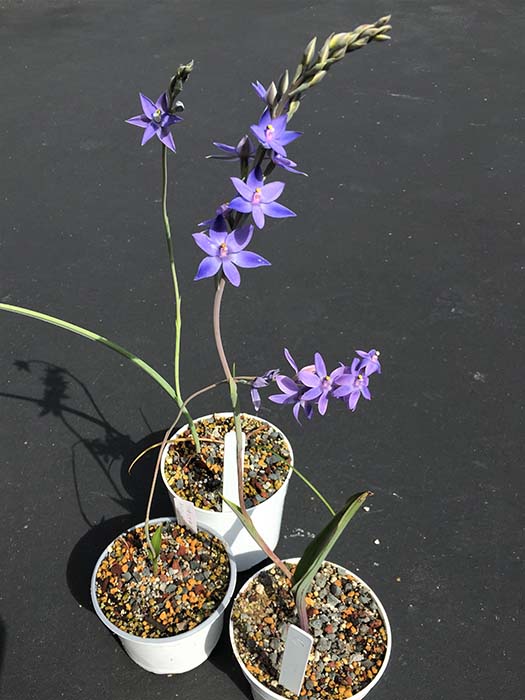 |
A sunny day, so three Thelymitras… |
Diuris drummondiiNo wonder they call it the “tall donkey orchid”. The last of all my Diuris to bloom, with a long (30”) stem and bright yellow flowers. Probably needs the long stem to rise above the weeds and grass where it grows in Australia. |
|
From Roberta Fox:
|
|
Some of my terrestrials are also in bloom... |
|
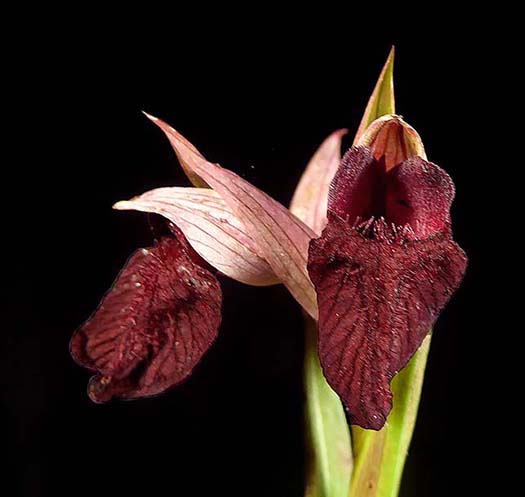 Serapias cordigera |
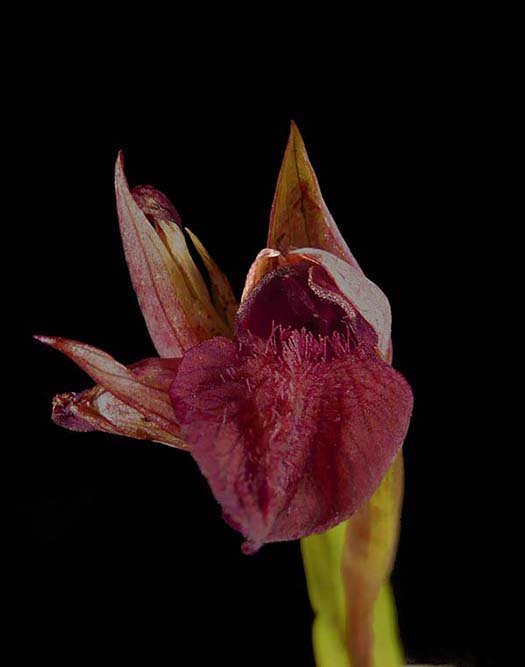 |
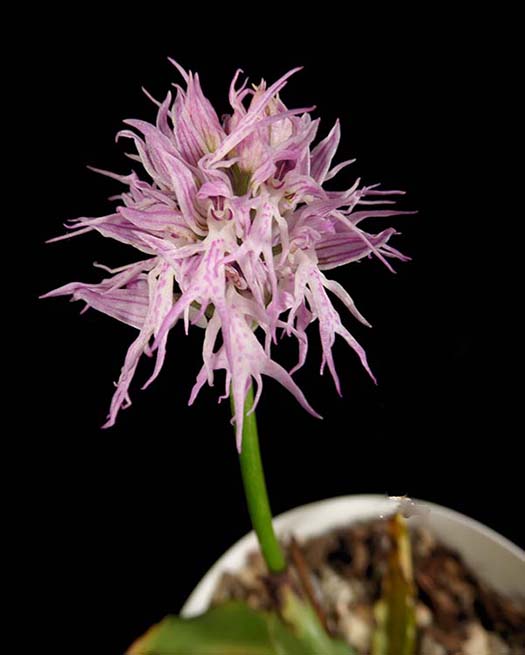 |
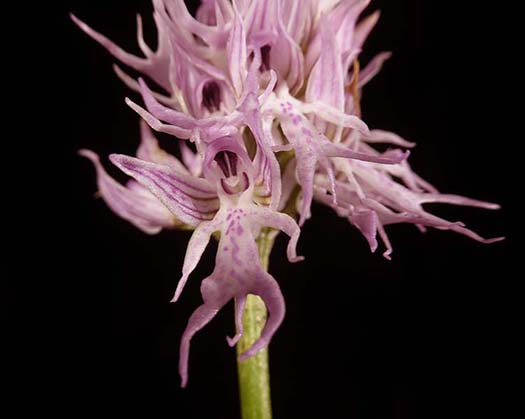
Orchis italicaFirst year blooming for me. Scott tells me that these get bigger as they mature and make bigger tubers. |
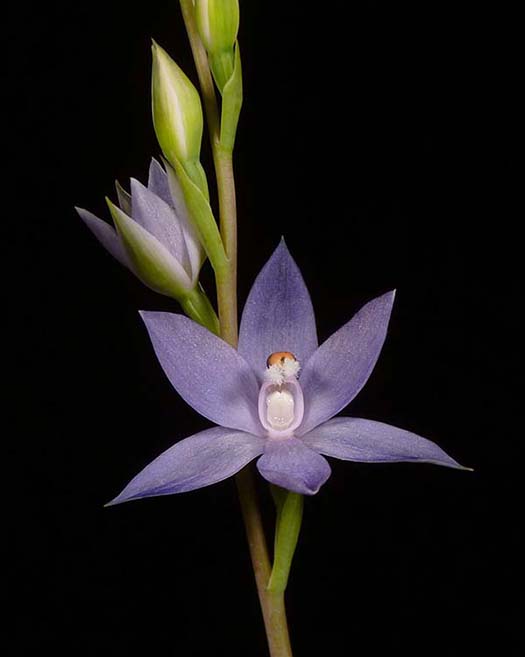 |
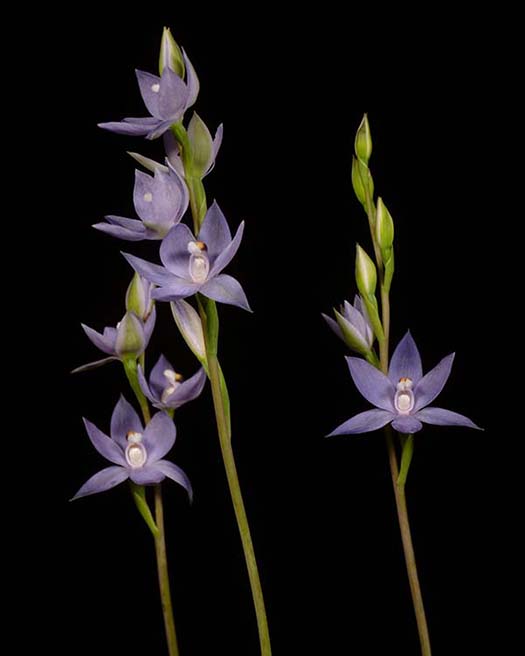 |
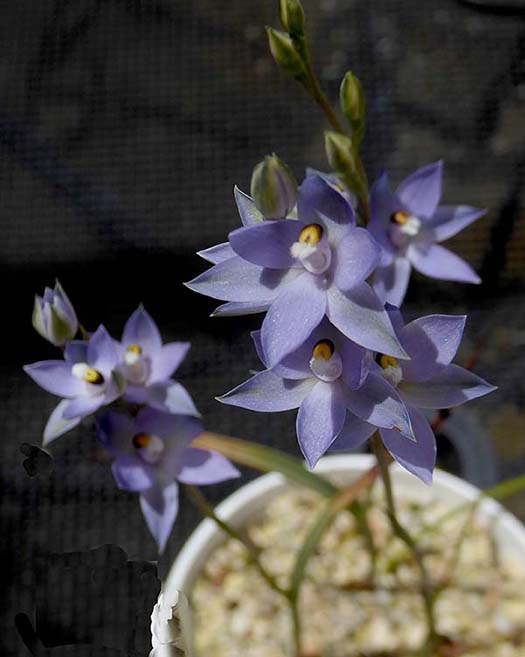 |
Thelymitra glaucophyllaOf my Thelymitras, the only one to bloom, but its a gorgeous one. The photo immediately to the left was taken outside under natural light, the others in my "studio". These are open only under bright sunlight, so the indoor photos had to be taken quickly before they sensed dimmer light. |
And the rest...also grown outdoors, unless othewise noted |
|
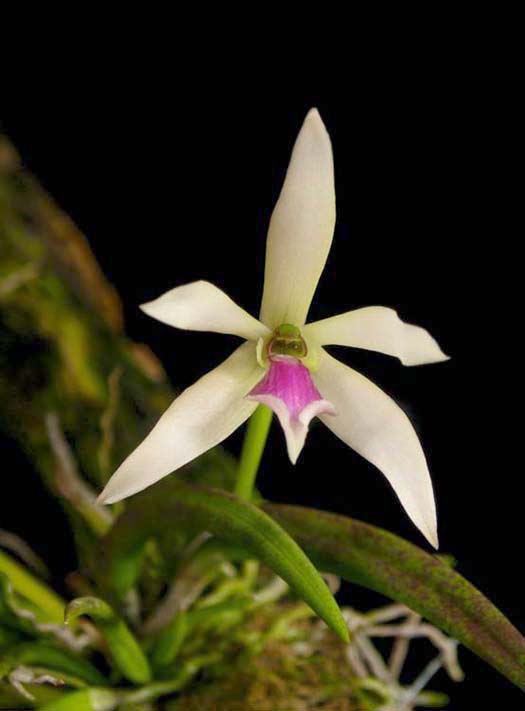 |
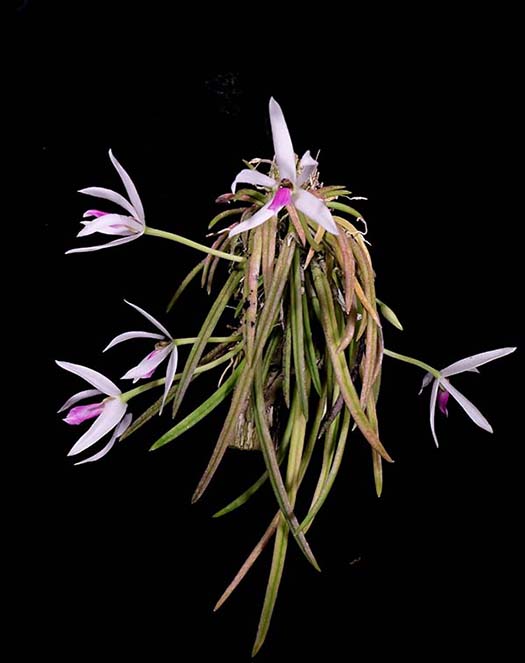
Leptotes bicolorCattleya tribe. This genus realy wants to grow mounted. |
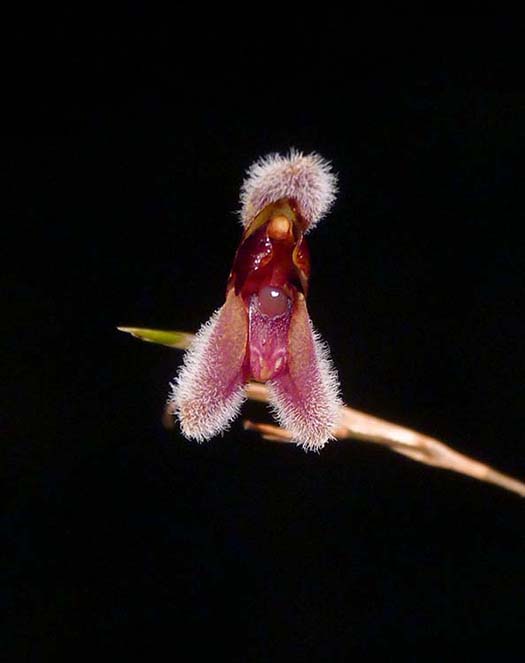 |
|
Condylago rodrigoiNow classified as Stelis. I have had it for several years, it finally bloomed. Possibly one of those that was waiting for the RO water to thrive. |
|
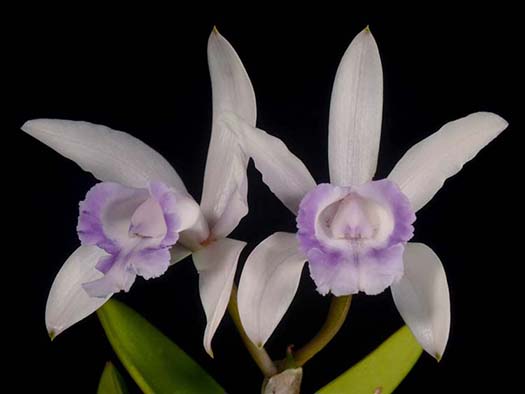
Cattleya intermdia f. orlata coeruleaThis is the season for C. intermedia, which has a variety of color forms. Here are two. |
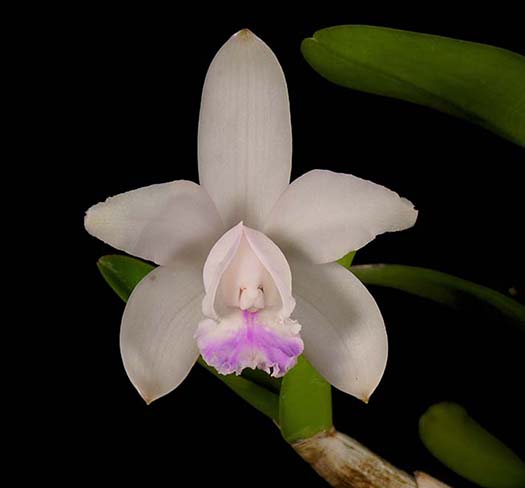
Cattleya intermedia f. amethystina
|
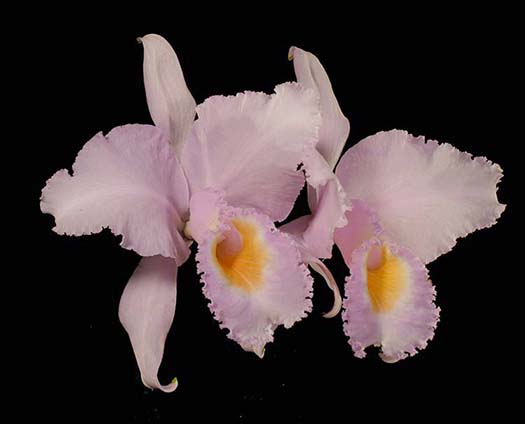
Cattleya schroederaeA large-flowered (5-6 inches) Cattleya that is reasonably happy to grow outside. I do have it under polycarbonate cover to protect from cold winter rain. |
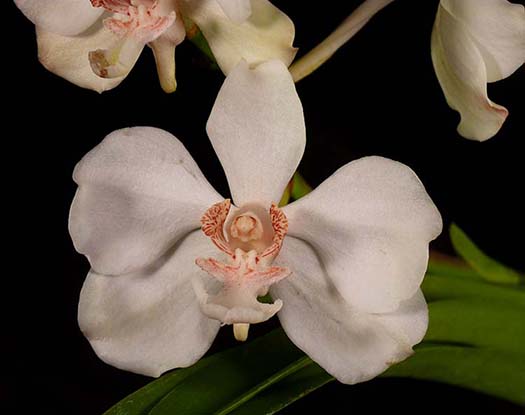
Vanda barnesiiIt was purchased as V. javerae. This batch of plants was the subject of an Orchid Digest article discussing the differences between the two species. |
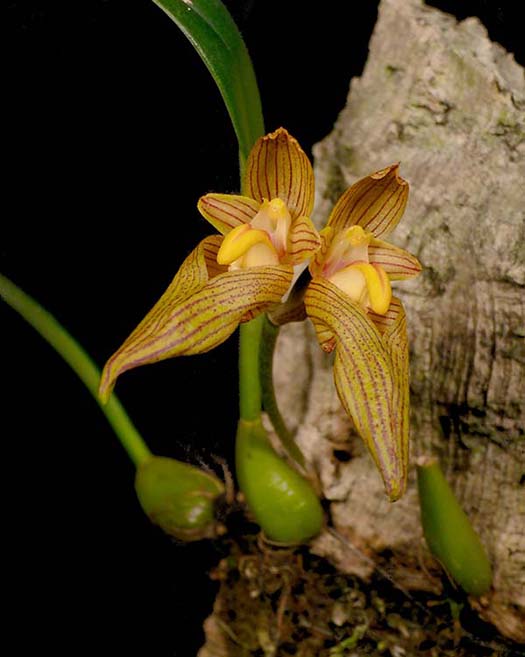 |
|
Bulbophyllum tianguiiA cool-growing species from China. The flowers are almost as big as the plant. |
|
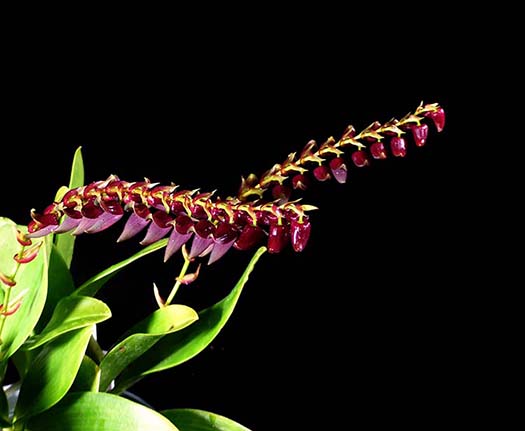 |
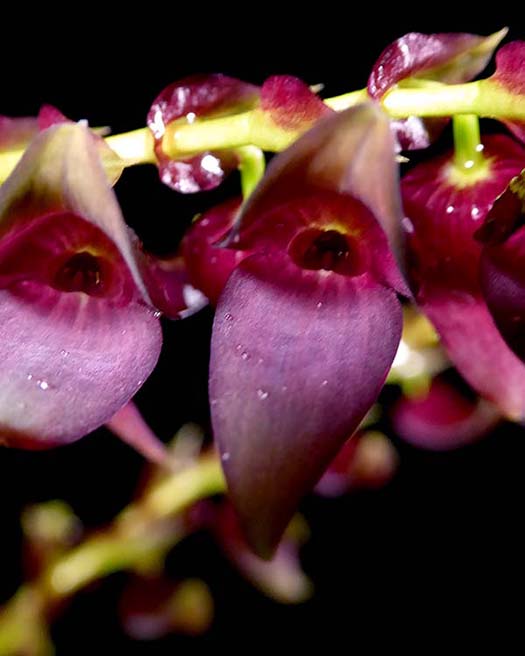 |
Stelis purpureaThe flowers open in the early morning, and close up when the sun hits them. On a cloudy day they may stay open until 9 or 10 AM, but on a bright day they're closed by around 8 AM. So they are the diametric opposite of the Thelymitras that don't even think of opening until nearly mid-day when the sun is bright. |
|
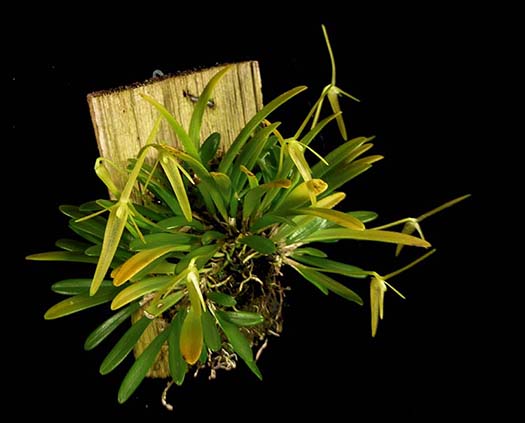
Barbosella cucullataA very floriferous miniature. It also has darker color forms. |
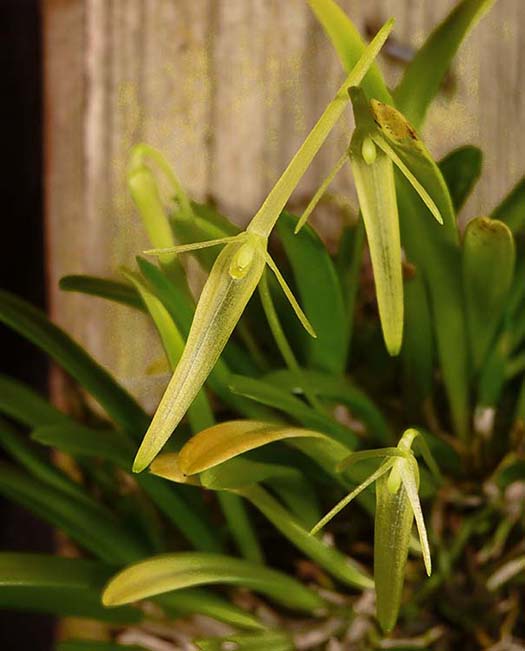 |
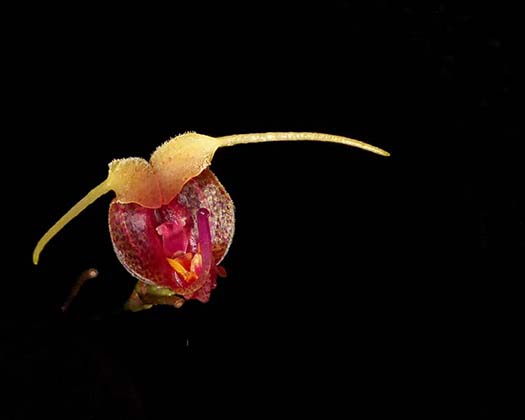 |
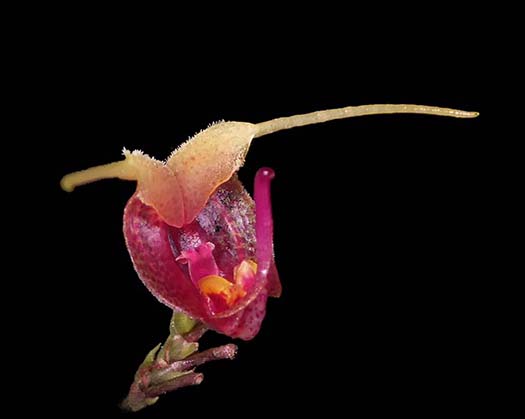 |
Scaphosepalum swertifoliumAn inflorescence can produce many flowers over several months or more. These little flowers (about 1/2" from tip to tip) are very complex, and so are difficult to photograph with everything in focus at the same time. |
|
Phalaenopsis cornu-cervi f. chattaladeaeIn the greenhouse (normal Phalaenopsis conditions). This species blooms sequentially on old inflorescnces, and continues to grow new ones as well, putting on a spectacular show. The species has a variety of color forms, from yellow with brownish stripes to this deep red, as well as an aurea form. |
|
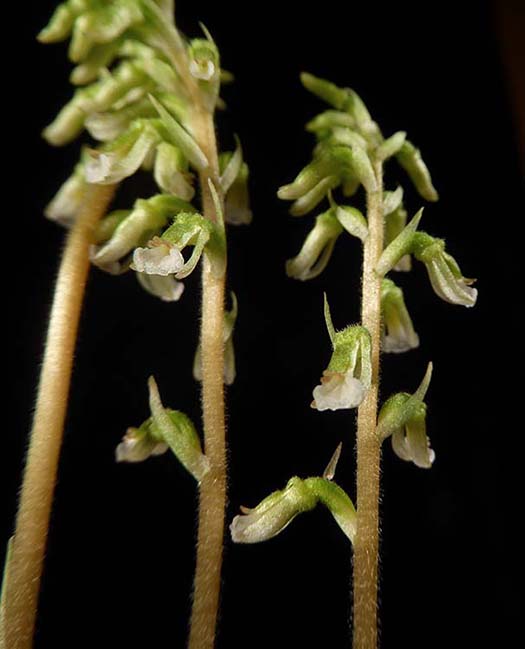 |
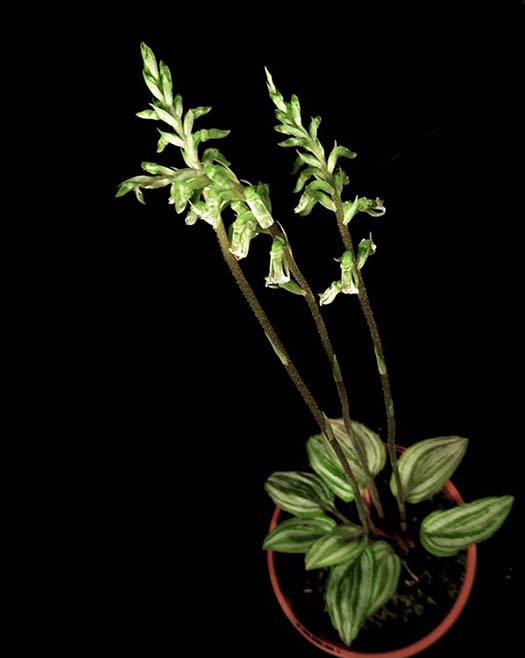 |
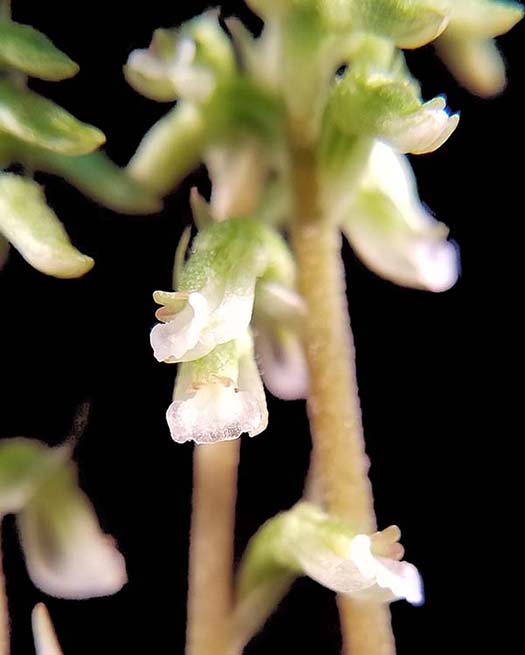 |
Cyclopogon lindleyanusGreenhouse, but could also be grown as a house plant. It is a terrestrial from Ecuador with little flowers, but very attractive leaves. According to IOSPE (orchidspecies.com) it comes from elevations up to 1600 m, so very possibly could grow outside. |
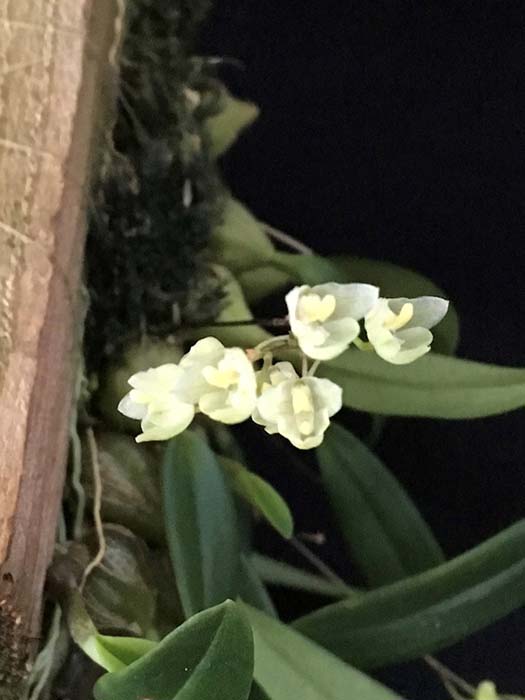
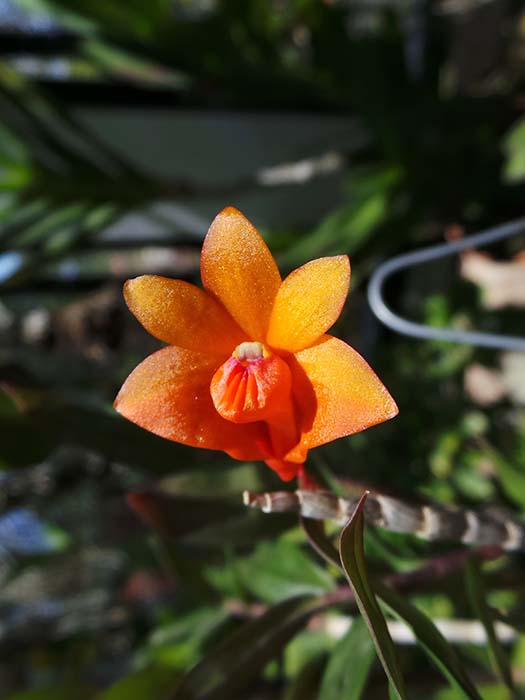
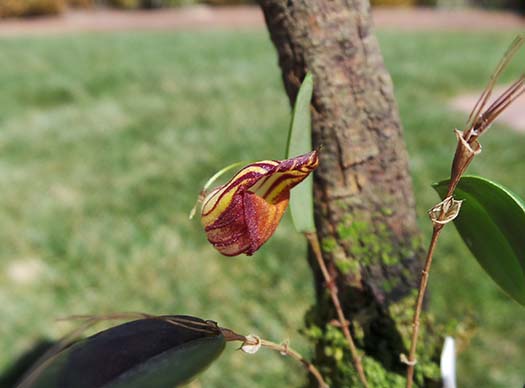 More views of Lepanthes caprimulgus
More views of Lepanthes caprimulgus